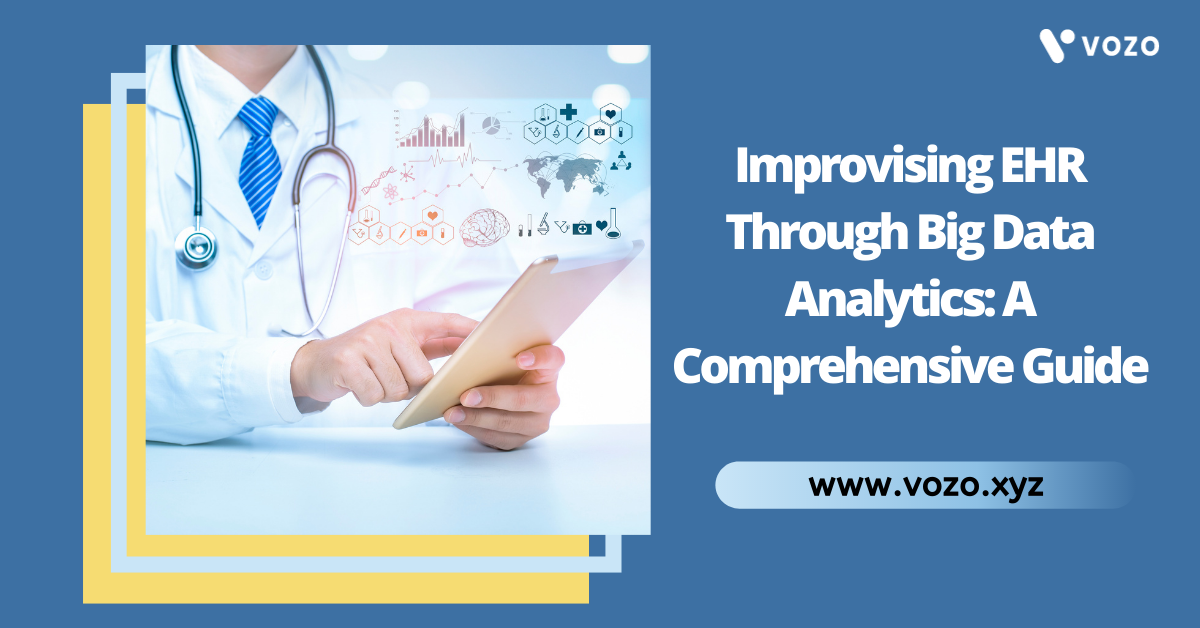Improvising EHR Through Big Data Analytics: A Comprehensive Guide
To generate a high standard of understanding and perceptions of clinical practices, proper, correct, and sufficient usage of big data analytics and electronic health records are needed.
Improving EHRs using big data analytics is very important as it produces effective ways for innovations and clinical outcomes. A key role in this matter is organizational learning. Let us look into this in-depth through this comprehensive guide.
What Is Big Data Analytics?

According to a source, “big data analytics is the often complex process of examining big data to uncover information — such as hidden patterns, correlations, market trends, and customer preferences — that can help organizations make informed business decisions”.
On a broad scale, data analytics technologies and techniques give organizations a way to analyze data sets and gather new information. Business intelligence (BI) queries answer basic questions about business operations and performance.
Big data analytics is a form of advanced analytics, which involve complex applications with elements such as predictive models, statistical algorithms, and what-if analysis powered by analytics systems.
EHR And Big Data Analytics

Everything in healthcare is driven by big data. There is no exemption for EHR here. EHR itself is considered “big data” sometimes. EHR adoption has increased worldwide now. Studies say that soon in the United States alone, the patient visits documented per year in the EHR systems will reach one billion.
Data in EHR not only include patients alone, but also includes a high level of data regarding medical conditions, underlying genetics, and treatment approaches.
The need for understanding big data is vast but the present human initiative to learn, study, understand, and process the data is limited. That’s why digital-based or computer-based methods are required to organize, interpret, and recognize patterns from these data.
Improvising Electronic Health Records Through Big Data Analytics

Data continues to have a second level use for quality improvement and research options that efficiently helps in improving patient care and limiting healthcare costs, while the adoption of EHR is being encouraging.
The main goal of colliding and improving EHR through big data analysis is to facilitate a healthcare framework that is constantly learning with concurrent knowledge production, and create an ecological community that is portending, preventive, personified, and actively engaging.
The EHR data have been used to improve care over the years. It is also used to increase patient engagement, provide quality care, build standardized models and sharing capacities across organizations, create new knowledge, facilitate research outside the conservative controlled trials, enable public heal interventions, and facilitate individualized care and clinical decision-making.
Benefits Of Big Data Analytics To EHRs

Although processing big data is a complex thing, it reveals the covered patterns which were not uncovered by experts, identifies market trends, and studies and reports the preferences of customers.
These data help to improve EHRs in turn increase the efficiency of practices to work for better patient outcomes and reduce workload. These researches made by big data analysis help healthcare organizations to make better decisions to improve their workflow and operational efficiency.
The technologies of data analytics open up opportunities and methods for healthcare organizations to work on data sets and gather new information that can uplift them. Big data analytics also helps healthcare organizations to predict future trends and improvise themselves to meet the required standards.
Limitations

Big data analytics is a bigger concept and EHRs are a daily improved and updated concept. Many studies have to be made to study the complete structure of big data and its implementation in improving EHRs.
Using the EHR system to meet the healthcare questions contrasts with the traditional “collecting data” research approach.
Although EHRs are widely used and popular among those in the continuum, there are many challenges like limitations in processing its ability, interoperability, lack of high-end compliance and security, accuracy, completion of records, costs, privacy concerns, and the difficulty in extracting required information.
An Overview

Big data always has helped to improvise the healthcare continuum for decades. It also can uplift and upgrade electronic health records when used to their optimum.
The increased usage of EHR in the present and future will capture an enormous amount of clinical data. The focus should be on transforming these big healthcare data into knowledge-based use. Data mining and natural language processing techniques are key components of analytics for EHR data.
Privacy and security standards should be tightened for facilitating EHR healthcare data sharing. To protect sensitive patient information, access control methods and security measures should be determined.
Welcome to VozoEHR. Your perfect partner for all your clinical needs. Our cloud-based EHR enables you to optimize your clinical workflow, operational functions, patient engagement, and health outcomes and reduce organizational costs.
“Enhance your EHR through big data analytics, together with us”
About the author

With more than 4 years of experience in the dynamic healthcare technology landscape, Sid specializes in crafting compelling content on topics including EHR/EMR, patient portals, healthcare automation, remote patient monitoring, and health information exchange. His expertise lies in translating cutting-edge innovations and intricate topics into engaging narratives that resonate with diverse audiences.













